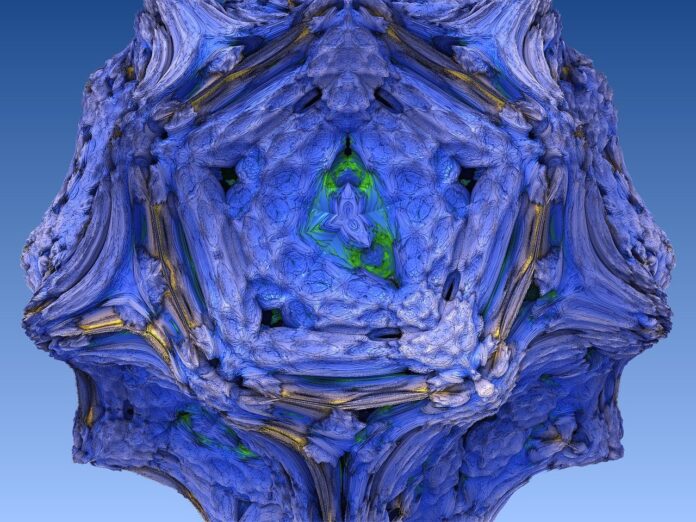Radiography technology serves as a cornerstone in modern medical diagnostics, enabling healthcare professionals to visualize internal structures and detect abnormalities within the human body. This technology utilizes electromagnetic radiation, typically X-rays, to create detailed images of bones, tissues, and organs, thereby facilitating the identification of various medical conditions and injuries. By capturing high-resolution images, radiography technology plays a critical role in aiding physicians and radiologists in making accurate diagnoses and developing effective treatment plans for patients. The application of radiography technology spans across a diverse range of medical disciplines, encompassing areas such as orthopedics, dentistry, oncology, and emergency medicine, among others, making it an indispensable tool in the realm of modern healthcare.
The advancement of radiography technology has revolutionized the field of medical imaging, introducing a multitude of innovative techniques and modalities that have significantly enhanced the quality and precision of diagnostic imaging. Digital radiography technology, for instance, has replaced traditional film-based X-ray systems, offering numerous advantages such as faster image acquisition, enhanced image manipulation capabilities, and the ability to store and transmit images electronically. This transition to digital imaging has streamlined the diagnostic process, enabling healthcare providers to access and analyze patient images more efficiently, while also reducing the exposure of patients to potentially harmful radiation. Moreover, the integration of computerized systems and advanced image processing algorithms has further augmented the capabilities of radiography technology, enabling the generation of highly detailed and comprehensive images that facilitate more accurate and informed clinical assessments.
Parallel to the advancements in digital radiography, the development of specialized modalities such as computed tomography (CT), magnetic resonance imaging (MRI), and ultrasound has significantly expanded the capabilities of radiographic imaging, allowing for the visualization of intricate anatomical structures and physiological processes with enhanced clarity and precision. CT technology, for example, utilizes a series of X-ray images taken from different angles to construct detailed cross-sectional images of the body, enabling the visualization of internal organs and tissues in three dimensions. Similarly, MRI technology leverages powerful magnetic fields and radio waves to generate detailed images of soft tissues, organs, and the central nervous system, providing valuable insights into a diverse array of medical conditions ranging from musculoskeletal disorders to neurological abnormalities. Ultrasound technology, on the other hand, utilizes high-frequency sound waves to create real-time images of internal organs and fetal structures, making it a valuable tool for obstetric and gynecological assessments, as well as for evaluating various abdominal and cardiovascular conditions.
The widespread adoption of radiography technology has not only transformed the landscape of diagnostic medicine but has also paved the way for significant advancements in therapeutic interventions and minimally invasive procedures. Interventional radiology, for instance, encompasses a range of image-guided techniques that allow physicians to perform various medical procedures with precision and accuracy, often eliminating the need for more invasive surgical interventions. From the placement of stents and catheters to the administration of targeted cancer therapies, interventional radiology techniques have revolutionized the treatment of numerous medical conditions, offering patients less invasive alternatives and significantly reducing recovery times and associated risks. The integration of radiography technology within the realm of minimally invasive surgery has also led to the development of image-guided surgical systems, enabling surgeons to perform intricate procedures with enhanced visualization and precision, thereby improving surgical outcomes and patient recovery rates.
Furthermore, the ongoing evolution of radiography technology continues to drive research and development in the field, leading to the emergence of cutting-edge imaging technologies and techniques that hold the potential to revolutionize diagnostic and therapeutic approaches in the years to come. Innovations such as molecular imaging and functional imaging are expanding the frontiers of radiography, allowing for the visualization of cellular and molecular processes within the body and providing insights into the functional aspects of organs and tissues. These advancements not only enhance our understanding of disease mechanisms but also hold promise for the development of personalized and targeted treatments, ushering in a new era of precision medicine and individualized healthcare.
Radiography technology is continually advancing, driven by a combination of technological innovation and the ever-evolving healthcare landscape. One of the notable trends in radiography is the increasing focus on reducing radiation exposure. While X-rays have been invaluable for diagnosis, concerns about radiation exposure have led to the development of low-dose protocols and the adoption of dose reduction strategies. This not only ensures the safety of patients but also aligns with the principle of delivering the least amount of radiation necessary for a diagnosis.
Moreover, the integration of artificial intelligence (AI) in radiography has the potential to further transform the field. AI-driven algorithms can analyze vast datasets and assist radiologists in detecting subtle abnormalities and providing more accurate diagnoses. Machine learning can enhance the efficiency of radiology departments, automating routine tasks like image analysis and freeing up radiologists to focus on complex cases and patient care.
Tele-radiology is another area where radiography is making significant strides. With the growth of telemedicine and remote diagnostics, radiologists can now interpret images and provide expert consultations from anywhere in the world. This not only improves access to specialized care but also helps in more timely diagnosis and treatment planning, especially in remote or underserved areas.
In the realm of 3D and 4D imaging, radiography is moving beyond traditional 2D representations. Three-dimensional imaging, including 3D mammography, provides a more comprehensive view of structures, improving the detection of abnormalities. Additionally, 4D imaging, which adds the element of time, allows for the visualization of dynamic processes such as blood flow and organ motion. These innovations are invaluable for various medical fields, from cardiology to obstetrics.
The application of radiography technology also extends beyond human medicine. Veterinary radiography is an essential tool for diagnosing and treating animal health conditions. It helps veterinarians identify fractures, internal injuries, and other health issues in pets, livestock, and wildlife.
In the future, radiography technology is poised to continue advancing, offering even more precise and personalized healthcare solutions. Some of the key directions for the field include:
Nanoradiography: Researchers are exploring the use of nanoparticles that can be administered to patients and target specific areas for imaging. This technology has the potential to provide incredibly detailed images at a microscopic level, opening new possibilities for early disease detection and treatment monitoring.
Functional Imaging: The integration of functional data with anatomical images is becoming increasingly important. This approach helps in understanding how different body systems work and can provide insights into neurological disorders, cancer growth, and more.
Radiomics: Radiomics is an emerging field that involves the extraction of a large number of quantitative features from medical images. These features can be analyzed to predict disease outcomes and treatment responses, potentially revolutionizing the practice of precision medicine.
Personalized Imaging: Tailoring imaging techniques to an individual’s specific needs is on the horizon. With advances in genomics, a person’s genetic makeup could influence the choice of imaging modalities, optimizing diagnosis and treatment for their unique characteristics.
Radiation-free Imaging: The pursuit of radiation-free imaging technologies, such as optical coherence tomography (OCT) and magnetic resonance imaging (MRI), is ongoing. These methods reduce or eliminate radiation exposure and provide detailed images for various applications, including cancer detection and ophthalmology.
Radiography technology has come a long way since its inception, playing a pivotal role in modern healthcare. Its continual evolution, from film-based X-rays to digital imaging, CT scans, MRI, and beyond, has expanded diagnostic capabilities and improved patient care. As technology advances, radiography will continue to push the boundaries of what’s possible, contributing to earlier disease detection, more accurate diagnoses, and more personalized treatment plans. With the integration of AI, dose reduction techniques, and innovative imaging modalities, the future of radiography promises a healthcare landscape that is safer, more efficient, and more effective in improving the well-being of individuals worldwide.
In summary, radiography technology remains an indispensable component of modern healthcare, playing a vital role in diagnostic medicine, therapeutic interventions, and research endeavors. With continuous advancements and innovations, radiography continues to transform the landscape of medical imaging, enabling healthcare professionals to visualize and understand complex physiological processes, diagnose a diverse range of medical conditions, and deliver targeted treatments with improved precision and efficacy. As technology progresses and research in the field continues to evolve, radiography is poised to play an increasingly central role in shaping the future of healthcare, offering new possibilities for early detection, accurate diagnoses, and tailored therapeutic interventions, thereby enhancing patient outcomes and contributing to the advancement of medical science.






















